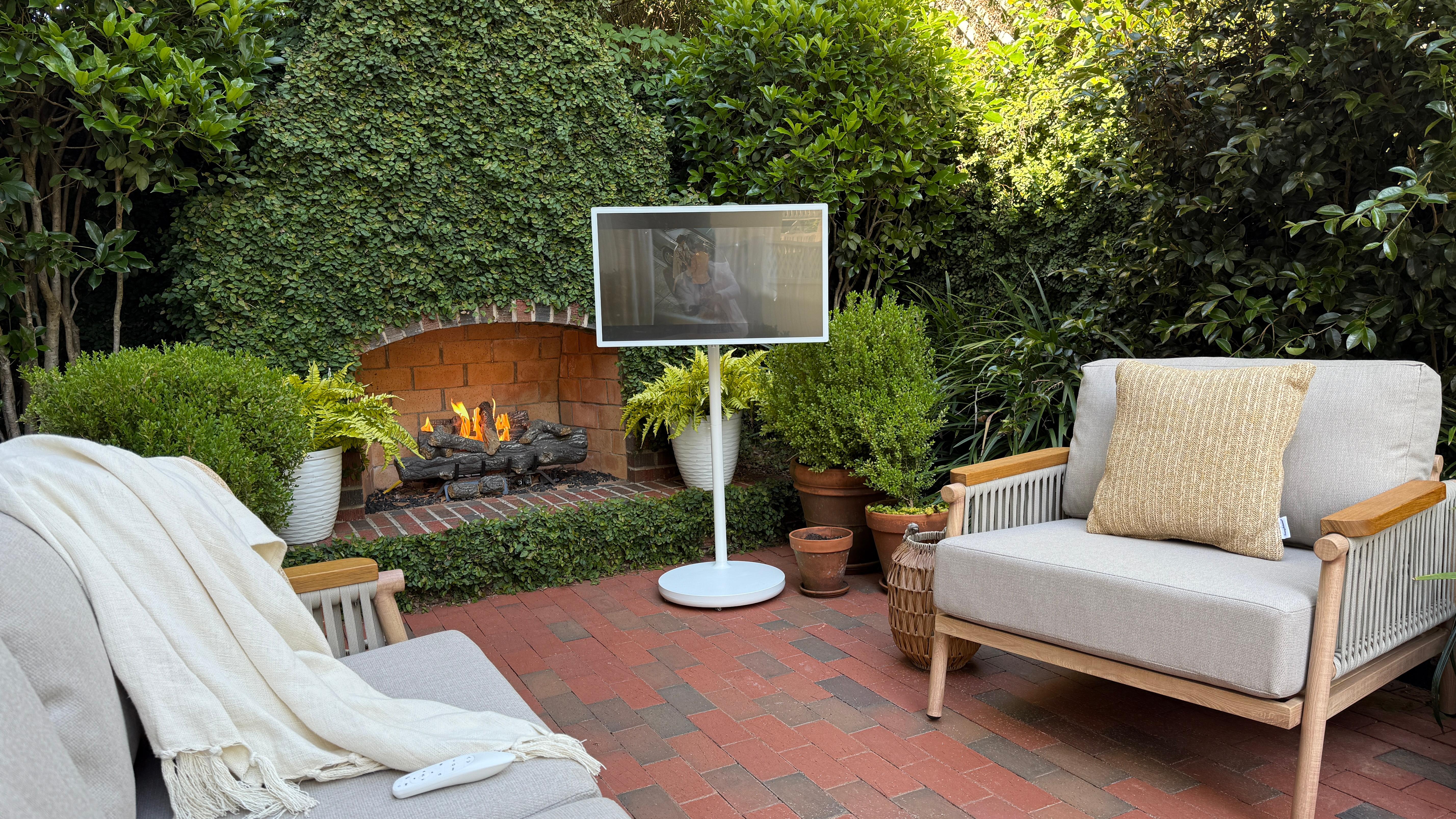Table of Contents
From mere black-and-white boxes that just received signals to today’s smart, voice-responsive devices that feel like a friend, your television has come a long way. The next-generation smart TV is not limited to a display; it is an intelligent assistant that learns and adapts to your preferences in real-time.
AI technology in TVs is responsible for this transformation, which is changing the way you interact with your screen. According to Markets and Markets, Artificial intelligence is playing an increasingly pivotal role in the Future of Display Technology in the USA, elevating the user experience of displays and functionality.
From gesture recognition and adaptive brightness to content recommendations, AI display technology is redefining entertainment. Curious to know how artificial intelligence is powering the next screen revolution? We will discuss the way AI-powered smart TVs are shaping the future of home entertainment and who to approach.
From Passive Viewing to Smart Interaction
Televisions Were Static Devices
Televisions had always been static, where screens only displayed broadcast content. You had to manually change the channels or rely on remotes. The user experience was completely one-directional, as whatever you wanted to watch, the TV delivered. The interaction was minimal as you just flipped through the channels or adjusted the volume.
The Era of the Smart TV with AI
The era of the Smart TV with AI has turned television into an intelligent, interactive device. Unlike traditional TVs, AI TV technology learns from your behavior. It suggests series you might enjoy, adjusts sound levels based on ambient noise, and optimizes visuals based on your lighting conditions.

Voice Control Smart TV Functionality
Voice control smart TV functionality is one of the most revolutionary upgrades. Here, rather than struggling with remotes, you can simply say, “Play my favorite movie,” or “Turn off the lights.”
This voice control feature transforms your television into a core part of a connected home ecosystem that seamlessly integrates with IoT devices and smart assistants.
AI Features Go Beyond Convenience
AI features in modern TVs offer way too much. The television includes advanced image recognition, enhancing visuals scene by scene. There is automatic subtitle generation, so even the differently-abled people can watch the shows, and emotion-based recommendations using voice or facial cues.
AI Technology Bridges The Gap
AI technology in TVs fills the gap between digital response and human intention, creating a two-way communication system. Viewers have become active participants in this smart viewing experience. This evolution has laid the base for a broader AI screen technology revolution, which not just transforms entertainment, but your daily life too.
AI-Driven: How to Improve Screen Revolution?
Artificial intelligence is the engine driving the next-generation smart TV revolution. Today, AI display technology permits screens to do far more than display moving images. It understands, predicts, and adapts to user requirements.
The AI-Powered Smart TV Personalizes Entertainment
The AI-powered smart TV personalizes entertainment. Through constant learning, the AI-driven systems analyze viewing habits, preferred genres, time of use, and also the kinds of devices connected. This in-depth approach allows the television to recommend content customized to each household member’s watching preferences.
For instance, after a month, you might see your TV automatically suggesting a new series similar to the one you recently enjoyed. Or the screen displays a quick news recap every morning while having breakfast.

AI Screen Technology Is Transforming The Industry
Another AI screen technology is another innovation transforming the television industry. This dynamically improves the picture quality. You no longer have to depend on fixed brightness or color modes because AI now adjusts the screen in real-time. This screen technology assesses your content scene by scene to brighten darker frames and enhance contrast. The result? You get color accuracy across different environments.
The Benefits Of AI in Smart TVs
The benefits of AI in smart TVs also extend to energy efficiency and device longevity. AI systems automatically reduce brightness in low-lit settings or turn off screens when not in use, optimizing power usage. Plus, they identify static images and adjust display intensity to help prevent screen burn-in.
How AI Is Changing Smart TVs?
How AI is changing smart TVs is also about intelligent sound design, not just visual. These AI-enhanced audio systems maintain a balance between background music and dialogue. It even adjusts volume and calibrates output according to the room’s acoustics.
Apart from that, AI features in modern TVs allow them to act as real-time translators, fitness companions who track your exercise movements during home workouts, or health monitors integrating with wearable data.
The AI Display Technology
The new era of AI display technology delivers a blend of visual intelligence, machine learning, and human-centered design. This gives you a screen that truly understands and evolves with you. The AI-powered smart TV is not only a screen, it’s a living, digital assistant, constantly thinking and shaping the screen revolution.
Smart Screens as Home Hubs
Today’s smart screens are the center of the modern connected home. Your screen, with AI technology in TVs, now acts as a multifunctional hub that seamlessly manages communication, entertainment, and automation:
Voice Control
The voice control smart TV doesn’t just respond to your entertainment commands. But, through a simple voice prompt, you can control your thermostat, lock the doors, and dim the lights. Connect to smart appliances, these televisions transform your daily routines into effortless, hands-free experiences.
Handles Household Coordination
The AI TV ecosystem also handles household coordination. As parents, you can use the smart display to manage family calendars, talk on video chats directly from the living room, and check security camera feeds. Yes, these are within one device.
Boost Safety and Efficiency
The benefits of AI in smart TVs boost safety and efficiency. For instance, AI-based monitoring notifies homeowners about unusual activity, automatically shuts off devices accidentally left on, or recommends energy-saving settings.
Tailors' Visual and Auditory Experiences
Furthermore, AI features in modern TVs tailor your visual and auditory experiences. Your kids can easily access their educational content. Adults receive the latest news, streaming recommendations, or fitness guides based on their habits.
Redefining Your Home Hub
In short, the smart TV with AI is redefining your home hub. The smart TV is the link between the digital ecosystem and people, bringing convenience, order, and intelligence to your daily life. The embedded AI display technology makes sure every interaction feels responsive and natural.
This drastic shift from only changing the channels to active participation indicates how AI screen technology is turning homes into more connected, intelligent spaces.
Beyond the Living Room: AI Meets Mobility
Artificial intelligence’s reach in display technology goes beyond the living room. The principles that fuel AI-powered smart TVs are now in mobile devices, tablets, and interactive displays across industries. This creates a unified screen ecosystem that accompanies you.

In Mobile Phones
AI display technology is in your mobile phones as well. Tablets and smartphones equipped with AI learn your usage habits just like AI TV systems. The technology suggests content, adjusts brightness based on your current location, and improves real-time video calls. While talking to your loved ones on video, it even blurs your background, correcting focus. This smooth continuity across screens creates a customized experience wherever you are.
Supports Professional Environments
You can use AI screen technology to give presentations. It also adjusts visuals based on lighting conditions, and through facial recognition, the technology detects audience engagement.
Teachers use AI-powered smart boards to interact with students. The board offers translations, note summaries, and adaptive visuals that match students’ learning pace and style.
Event and Entertainment Industries
Here, AI technology in TVs and mobile screens lets you enjoy immersive experiences through rich graphics, virtual hosts, and audience interaction.
These applications display how AI is changing smart TVs. What were once simple content platforms are now intelligent interfaces adapting to your viewing behavior across all screens.
Schedules Meetings
The benefits of AI in smart TVs include scheduling meetings, syncing reminders across multiple devices, and managing tasks. Artificial Intelligence guarantees that your digital experience remains the same, whether you are watching a movie on your sofa or reviewing a presentation on your phone.
The next generation smart TV is part of a broader AI-driven screen revolution merging intelligence, personalization, and mobility.
The combination of portability and AI display technology is ultimately transforming the way you work, learn, and play. Today’s AI screen technology is constructing the way for a future where displays are interactive, intuitive, and flawlessly connected to your requirements.
Conclusion
The rising AI-powered smart TVs are the dawn of a new digital era. A tool used for just viewing has unlocked the doors to intelligent living. Thanks to AI technology in TVs for significantly evolving screens that listen, learn, and adapt. As far as the benefits of AI in smart TVs are concerned, they have given you voice control smart TV capabilities, seamless integration with multiple devices, and personalized content recommendations.
Whenever you feel like purchasing an AI-powered smart TV, get in touch with GFF-AI. They have an excellent portable television with wheels underneath. This allows you to roll them from room to room, indoors and outdoors.
About the Author:
Nana Xu is a tech writer and product enthusiast who focuses on smart home devices and innovative display technologies. With a passion for user-friendly design and new trends in consumer electronics, she helps readers make smarter choices for modern living.





